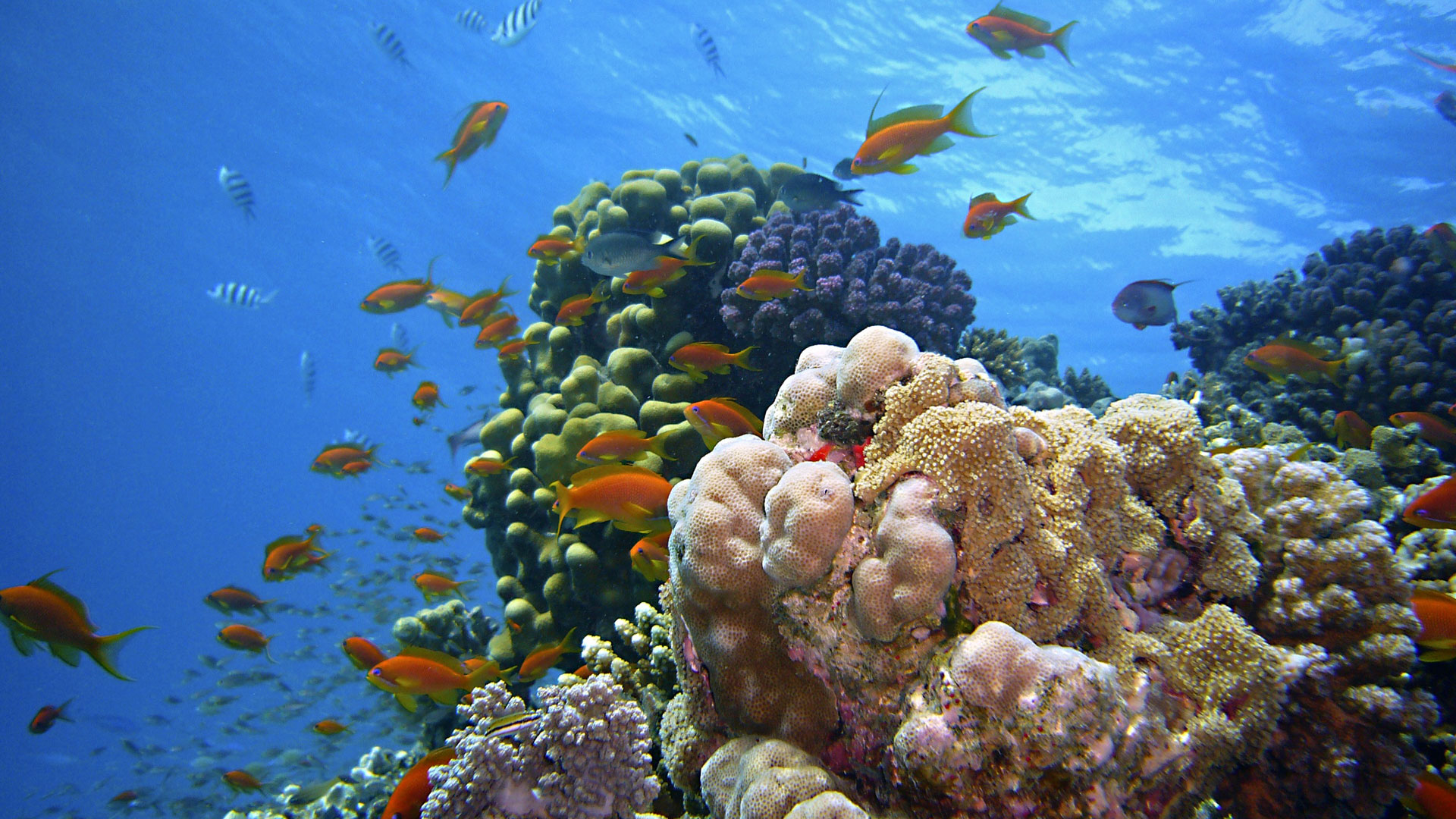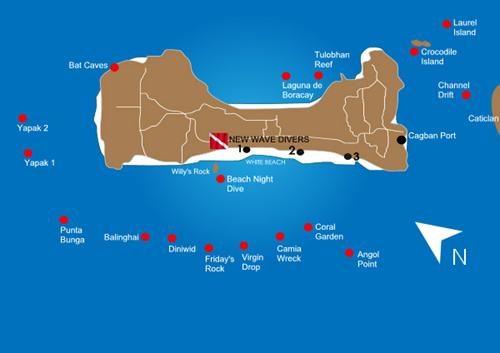
Updated December 27, 2024
Are you looking for your dream dive vacation? This is the tenth in a series of reviews of the best dive resort locations around the world. In this post, the focus will be on Boracay Island, Philippines.
In addition to this series on dive resort locations, the best worldwide liveaboard dive locations and services are reviewed in their own series. To check them out, or others in this series, click on Liveaboards / Resorts on the menu at the top and choose a title from the list.
Have you ever been diving in Boracay before? If so, I’d love to know about your experience. What dive shop or liveaboard did you use? Which dive spots are the best and what are the conditions there regarding the visibility, current, water temperature, sealife attractions, etc.? Please post your response in the comments section at the bottom and we’ll all learn something we can use.
Scuba Diving Boracay Philippines
In June of 1992, I went to Boracay and was so infatuated with it that I decided to leave my business career in Hong Kong and China, move to the Philippines, and become a scuba diving instructor. The business was slow in June and it was very peaceful and friendly, but I could see the potential of scuba diving and resort development that has come to fruition since that time.
Situated at the northeast end of Panay Province, 315 kilometers (196 miles) southeast of Manila, Boracay, with its pristine white sand, has been renowned as perhaps the most beautiful beach resort island in the world. Evening walks on beautiful, long White Beach watching the sunset paint the picture of an idyllic romantic scene.
While having such a strong reputation for its beach, sunsets, nightlife, and beautiful resorts, Boracay also has some surprisingly good scuba diving. Many of the dive sites are shallow and pretty easy, suitable for beginners and diver training, but there are also more advanced dives. There are around 25 dive sites within a short boat ride and dozens of dive shops offering the same basic reasonable pricing. Day trips taking in several of the most distant sites can be arranged. Very good night dives are conducted right off the beach.
Diving is good year-round. It rains throughout the year with the wettest time from June to October, but diving doesn’t often get interrupted. Air temperature moves in a narrow range with the average from 77-83°F (25-29°C). Water temperature can be as cool as 25°C (77°F) from December to February and as warm as 32°C (89.6°F) in April and May. Most of the time it is around 28°C (82.4°F). Visibility is best from April- June at 20-30 meters. During the plankton bloom from December to February, it dips to 5-10 meters.
The current is usually not strong with the exception, on occasion, being in the straits between Boracay and Carabao Island to the north and Boracay and Panay Island to the south. The so-called Channel Drift dive takes advantage of it.
Several dozen dive shops operate on Boracay providing a full range of diving coursework, equipment rental, guiding, and boat cruises.
For other popular reviews of Philippine diving, check these:
- Scuba Diving Romblon Philippines
- Scuba Diving Camiguin Philippines Review
- Scuba Diving Siquijor Island Philippines Review
- Scuba Diving Dumaguete Philippines Review
- Philippines Puerto Princesa Scuba Diving Review
- Best Liveaboard Diving – Tubbataha Reefs National Park
- Best Coron Wrecks & Apo Reef Liveaboards
- Best Liveaboard Scuba Diving Philippines
- Best Scuba Diving Philippines Subic Bay Wrecks
- Best Diving Bohol Philippines – Panglao Island Resorts
- Best Scuba Diving Puerto Galera Philippines
- Best Scuba Diving Philippines Sogod Bay
- Philippines Best Diving Mactan Island
- Best Philippines Diving Bacuit Bay El Nido
- Best Diving Philippines Anilao Batangas
- Best Diving Reviews Anda Bohol
- Best Scuba Diving Resorts Malapascua
- Best Diving Philippines Visayas Liveaboards
- Philippines Moalboal Scuba Diving Review

Selected Popular Boracay Dive Sites (Summaries)
Angol Point – little to no current, 10-15 meters, good for snorkeling, for beginners, and as a training site, macro photography favorite with nudibranchs, scorpionfish and anemones, hard and leather corals, sweetlips, groupers, sea snakes
Yapak 2 – two coral-encrusted walls starting at 30 meters going down to 70 meters, nudibranchs and pygmy seahorses at the top, mild to strong currents, suitable for advanced divers, schools of trevally, dogtooth tuna, and barracuda, whitetip and grey reef sharks, Napoleon wrasses, stingrays, potential for mantas and hammerheads
Laurel Island – actually consists of two islands, a reef from 10 meters, in the Panay channel, currents can be strong, steep slopes and walls, swim-through tunnel, small caverns, hard and soft corals, good macro life with nudibranchs, pipefish, and crabs, trevallies, snapper, barracuda, tropicals and shoaling fishes
Friday’s Rock – maximum depth of 18 meters, a site often used as a fish feeding station for discover scuba diving and night dives, appropriate for all levels, good biodiversity with emperor fish, sweetlips, parrotfish, triggerfish, blue-spotted stingrays, garden and ribbon eels, lionfish, scorpionfish, snappers, surgeonfish
Camia Wreck – 30-meter long cargo ship scuttled in 2001, sits on the bottom from 18 to 25 meters, encrusted in corals and sponges, pilot cabin and engine room penetrable, a diverse reef with resident batfish, bluefin trevallies, groupers, stonefish, scorpionfish, shoaling fish (see video below)
Balinghai – two parallel walls descending from a 12-meter plateau with a variety of hard and soft corals, sponges, and gorgonians, diverse fish life with lionfish, triggerfish, puffers, bannerfish, morays, scorpionfish, gobies, and angelfish, crevices, and cracks on the slopes, and wall to explore macro life
Punta Bunga – sloped wall with many plateaus down to 70 meters, from 10-35 meters many holes and cracks, rich diversity of hard and soft corals, eels, groupers, triggerfish, lionfish, butterflyfish, angelfish, snakes, blue-spotted stingrays, schooling jacks, barracuda, tuna, macro life including nudibranchs, pipefish, porcelain crabs, mantis shrimp

Borocay Photo Opportunities
With the macro life, beautiful, diverse coral reef, and many large fish, there are numerous excellent photo opportunities. For information and reviews of diving cameras, click here:
Boracay Accommodation
The many Boracay resorts and hotels range from budget to luxury in service and facilities. This website is a good source for the available options and can arrange a booking:
Scuba Dive Insurance
A cushion for emergencies provides peace of mind when on vacation. I recommend this diving insurance as they have worldwide coverage and provide scuba divers quality insurance and medical assistance service.
Feedback and Comments
I hope you found this post on Boracay scuba diving interesting and useful. If you have any questions or ideas, please feel free to share them in the comments section. I’d love to know of any experience you have diving there. If there is no comments section directly below, click here: >>comments<<


It’s definitely incredible that you left China and followed your dreams to Boracay! It must truly be an amazing place to inspire such a shift. I think if this is the first diving location that you ever visited in the Philippines, it would positively impact your views on diving. Like they say first impressions are important.
If this place is as gorgeous as you have described it to be, it is definitely worth a spot on the bucket list!
Hi Renton,
Thanks for going to my site and leaving such kind comments.
Boracay is a special inspiring place. Why don’t you give it a shot?
If you need any advice on diving or arrangements, please let me know. I’d like to invite you to look around my website for other great diving and vacation locations to consider.
Best regards,
Joe
Hi. Once again, I am on your site researching potential holiday sites in the Philippines. Although the other places have sounded really nice, the way you describe Boracay makes it sound like it could be the idea vacation spot. The shallow dive spots would be best suited for me since I am a beginner. Obviously, we can not spend our entire trip in the water. So, long walks in the evening enjoying gorgeous sunsets sounds ideal for a beach holiday. Since this would be our first trip to the Philippines, the ability to see other areas would be nice. The ability of being able to do a night dive would be a most remarkable way to explore the ocean. Hmmm, I better start looking at my budget to see what I can do to make a scuba diving holiday a reality. Thanks for introducing me to the idea of scuba diving in the Philippines.
Hi again, Sondra,
Thanks for your continued support and comments.
Boracay is one of those really memorable beach vacation areas that does also have pretty good diving to go along with it.
If you would like to see more than one place, I suggest you consider a liveaboard. Most of them give you a chance to not only dive at different locations, but also to go ashore and take in some of the local culture and land based natural resources.
If you have any questions, please get in touch. If you do come to the Philippines, let me know how it goes.
Best regards,
Joe
Joe,
I have always wanted to learn to scuba dive. My wife and I did some snorkeling in Hanauma Bay on Oahu in Hawaii.
I really think I would like the full-fledged underwater experience that scuba allows.
This sounds like a beautiful place. I like the descriptions of the recommended places to explore. Also, thank you for the info about the locations of areas where a person may need to be aware of the current.
I am glad you are getting to live your dream.
Randy
Hi Randy,
I am glad you enjoyed the post. Thanks for your kind comments.
If you would like to become a certified diver, the basic open water diver class takes about 4 days and includes some study, 5 shallow water classes to learn the skills and 4 open water dives to practice the skills and have a supervised introduction to the undersea world. You can take a class like this in many places including the resorts and a great many of the liveaboards that I review here on my site. Near where you live there also could well be a suitable place. I suggest you browse the different locations and see if there are any that attract you. If you would like some help to find a good spot for you to do it, please let me know.
If you have any questions or comments about diving, please let me know. I’d love to hear that you have taken the “plunge” and gone diving.
Best regards,
Joe